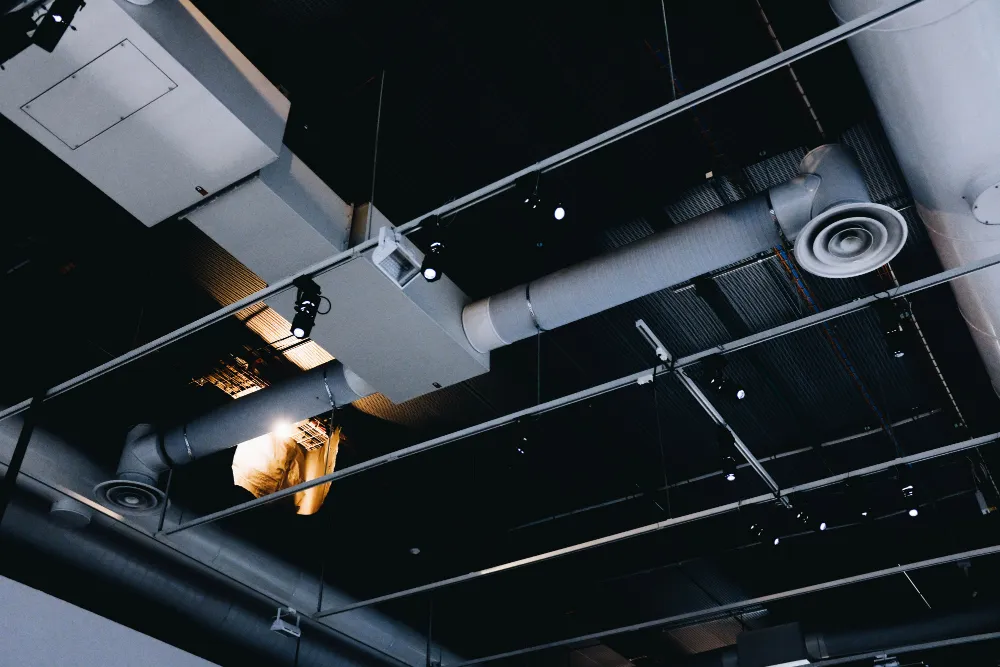What are HVAC systems in commercial buildings?
To understand HVAC systems more clearly, let’s look at different components.
Thermostats and Building Management System
The whole system works according to the occupant’s thermostat commands and pre-defined scenarios created on Building Management System (BMS).
BMS is an intelligent microprocessor-based system that centralizes and simplifies the control, monitoring and operation, and management of HVAC and other building systems to achieve:
- Safe and Comfortable Environment
- Energy Saving and Efficient Control
- Saving Maintenance Cost
BMS architecture consists of three levels:
- Field Level (consisting of field devices like sensors and actuators)
- Automation Level (Consisting of programmable DDC controllers)
- Supervision Level (Supervisory workstation computer containing graphics for control and monitoring of the complete system)

Air Handling Units
Air handling units (AHU) are used to mix the exhausted air collected all over the building with outdoor air and circulate air as part of an HVAC system. Air handlers are generally connected to a ductwork ventilation system to distribute the air throughout the building. Just like our lungs absorb oxygen, changing the state of air, AHU has the same functionality as HVAC systems.
Filters
The HVAC filters have an essential job to do. They filter dust, pollen, pet dander, and other small particles out of the air that building occupants breathe. These particles are trapped in the filter to prevent them from being recirculated throughout the building.
Return Air
Air being taken into the HVAC system by Air Handling Units.
Supply Air
Air being blown back out into the building via the ductwork distributed throughout the building.
Variable Air Volume
Variable Air Volume(VAV) regulates the quantity of air provided by AHU. It regulates the air that enters rooms with the use of its damper. This damper is set in a constantly changing position, and it controls the amount of air that passes through the VAV unit.
Fan Coil Units
A fan coil unit (FCU) is a standalone system that circulates the existing air in a small space (2-3 rooms). It’s a singular system that can operate independently to circulate air in an area without ductwork. One significant difference between FCUs and AHUs is that AHUs can bring outside air and heat or cool it. However, FCUs can only condition the air already present in the area by pulling it in and moving back out through its heating or cooling coil.
Refrigerant
Refrigerants are a series of chemicals whose compression/thermal qualities are useful for transferring thermal energy from one area to another.
Chiller
Chillers generate chilled water, which is used to provide air conditioning in buildings. Chillers use refrigerant gas to move the unwanted heat between the evaporator and the condenser. The chilled water is generated in an evaporator and this is sent around the building by a pump to collect the unwanted heat and bring it back to the evaporator to be cooled down.
Pumps
A pump is a device that will move water from one place to another by raising the pressure at the outlet of the pump so that it is higher than the pressure at another place in the system. It moves the cooled water from the chiller to the cooling coils in the air handling unit where it cools the air being re-circulated in the building.
Coils
Coils are a component formed by tubes of different materials through which a fluid passes, while these have external contact with the air, which allows an exchange of heat. Coils are used for cooling during summer days and heating during winter days.




